The following are illustrations commissioned by Silver Gryphon Games for an upcoming role-playing game project based on Sparta with a hellish twist. All illustrations are charcoal pencil on paper.
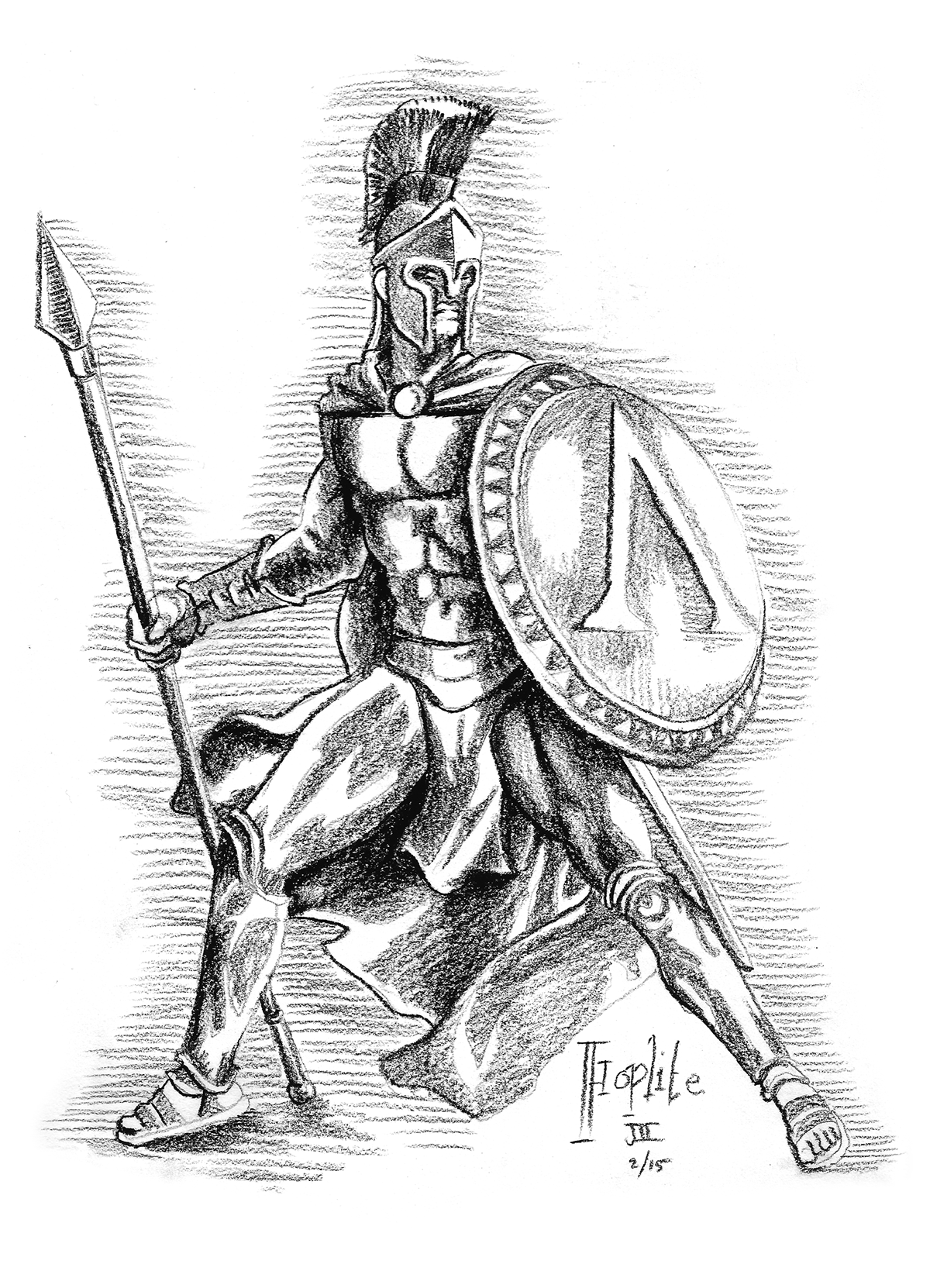
The hoplite is a military unit in the Greek army that is perhaps most recognized by the iconic helmet. Called hoplites after the circular shield each bore into battle, each member of the unit also carried a long spear called a dory which ensured that they had superior reach in battle.

Helots were considered property in ancient Greece, and treated as little more than slightly more intelligent cattle. At a certain time each year, helots could be murdered for any reason without any negative social consequences.

Oracles in ancient Greece were acclaimed as seers who heard the words of the gods and saw the future of mortals in visions. Notable examples include the oracle at Delphi and Dodona.

Peltasts were light infantry in the Thracian military, best known for their uniquely-shaped shields, called diplons. Their lighter armor made manueverability and stealth much easier. For this reason they were used for subterfuge and sabotage.
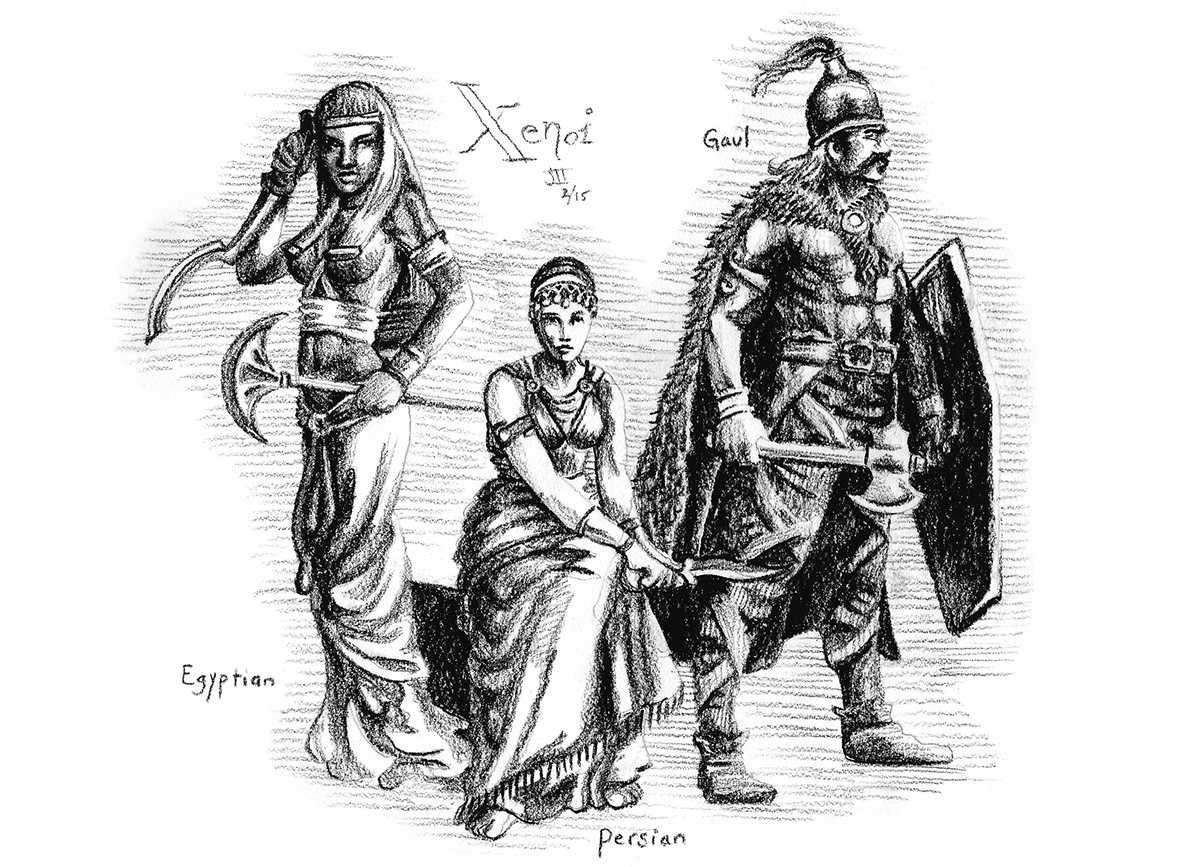
Xenoi are not one people, but all peoples not explicitly citizens of the Spartan nation. This included Egyptians, Persians, and Gauls, among others. Xenoi had no rights within Sparta, but were respected to a point.
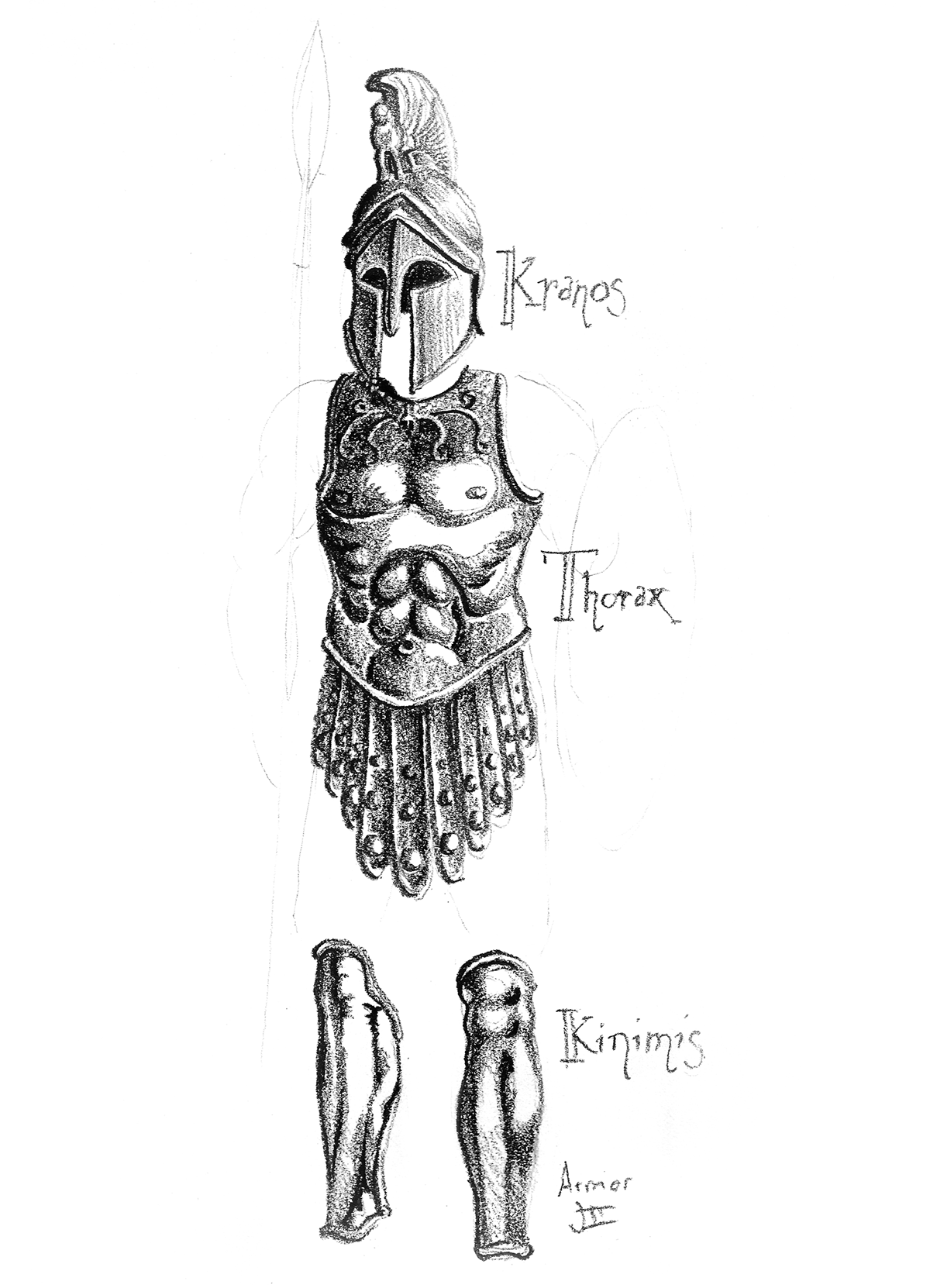
Crucial components of Spartan armor. Of note is the helmet, or kranos, from which the English word "cranium" is derived. The form of "thorax" has remained intact, though in modern times is typically only applied to certain classes of arthropods.
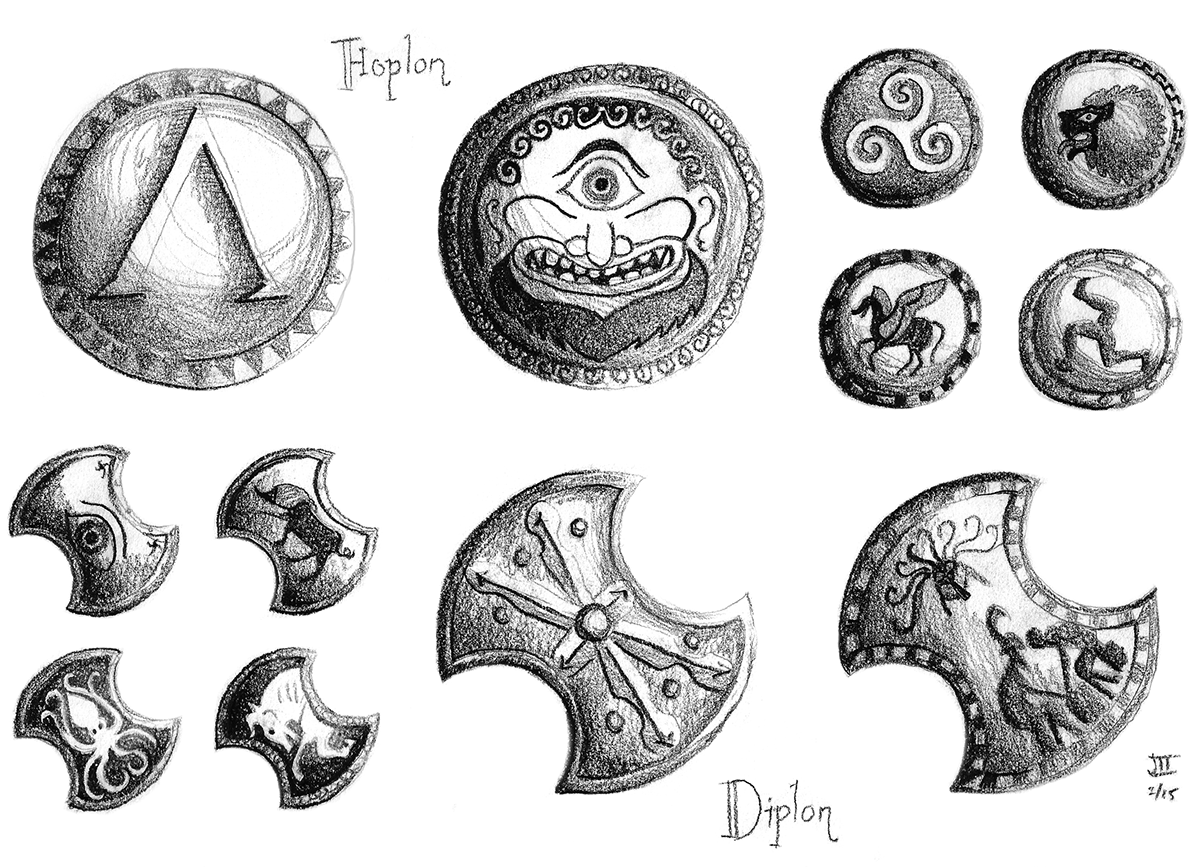
Spartan shields most often came in two varieties: the hoplon and the diplon. The hoplon is perfectly circular and the word is the ancient basis for the English word "hoop."
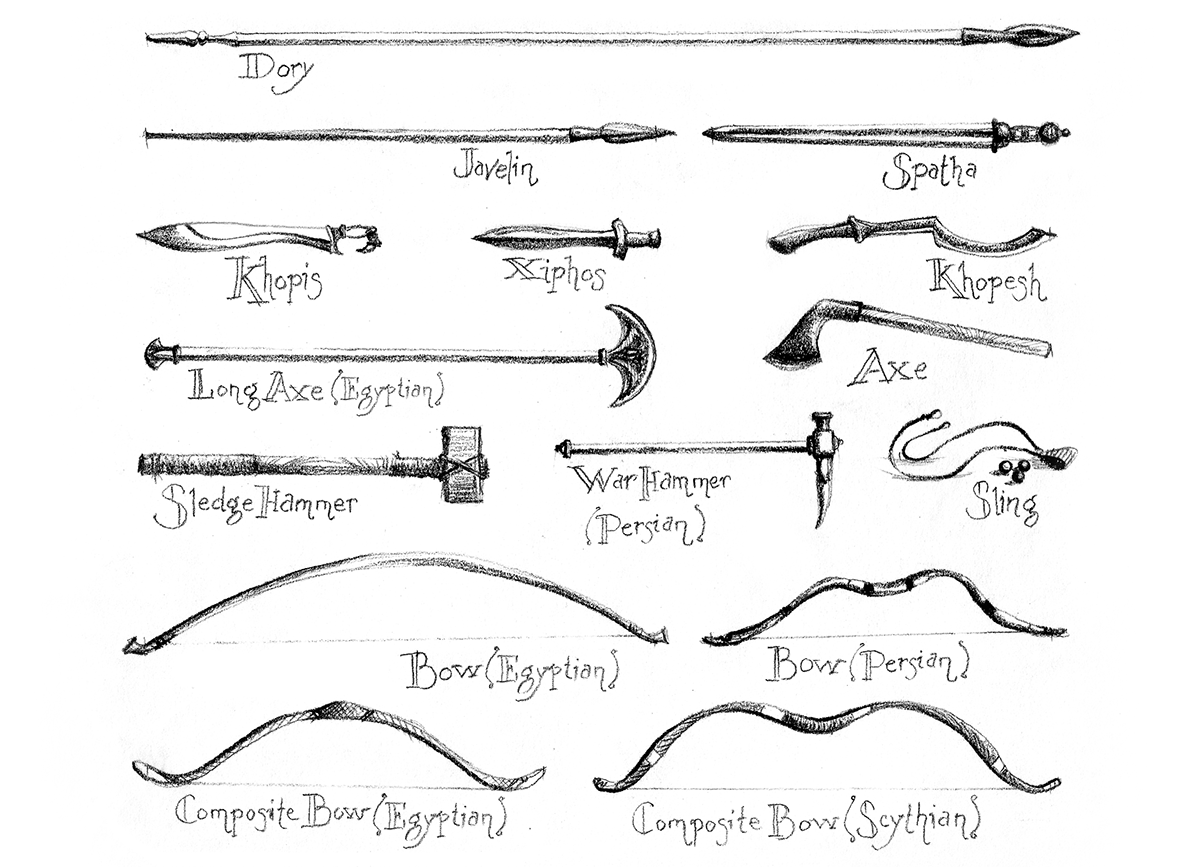
Weapons from ancient times.




